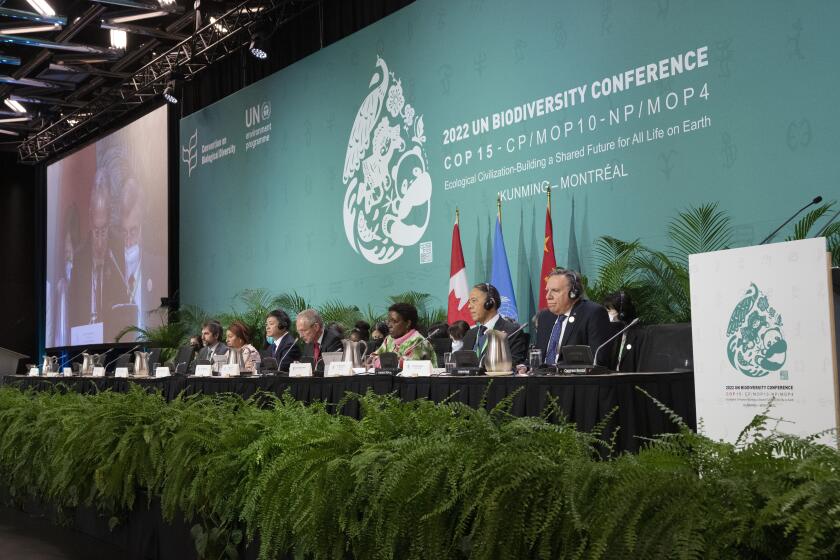Conservationists near goal of turning Orange County oil field into nature preserve

- Share via
The nonprofit Trust for Public Land on Friday completed the purchase of an oil field that sits atop the coastal bluffs of Newport Beach, guaranteeing the property will be cleaned up and preserved as open space.
The 384-acre Banning Ranch property, whose future was at the center of an intense decades-long fight in Orange County, is considered the last piece of undeveloped coastal real estate left in Southern California.
For years, developers had eyed the multimillion-dollar swath of land — with its sweeping views of the Pacific Ocean — as a prime location for homes, shopping and, at one point, a boutique hotel. But conservationists and local Indigenous leaders saw an opportunity for rare open space in a county of nearly 3.2 million people.
Originally the ancestral homelands of the Acjachemen and Tongva, who called this land Genga, it became a cattle and sheep ranch after Western settlement — and since the 1940s has been an active oil field.
Oil wells, pipelines and other equipment remain scattered across the property, which is surrounded by a chain link fence that not many residents have ventured beyond. But on noon Friday, oil operations officially stopped, said Guillermo Rodriguez, the Trust for Public Land’s state director.
A coalition of California tribes and environmental groups is calling for U.S. Environmental Protection Agency oversight of the state water board.
“It’s surreal after years of trials and tribulations that today a nearly 400-acre property is now in public hands,” Rodriguez said. “This is a tremendous opportunity to increase habitat restoration and wildlife restoration in an urban setting.”
The Trust for Public Land and the Banning Ranch Conservancy worked for years to secure $97 million in public and private funding to purchase the property from AERA Energy and Cherokee Investment Partners.
Their effort was bolstered by a $50-million donation from longtime Orange County residents Frank and Joan Randall. The Wildlife Conservation Board, California Natural Resources Agency, State Coastal Conservancy, and California Department of Fish and Wildlife also allocated funds toward the purchase of the land.
Banning Ranch is home to roughly 100 acres of marshes, mudflats and riparian scrub and 67 acres of coastal sage scrub that provides habitat for sensitive species such as burrowing owls, fairy shrimp, peregrine falcons and the federally endangered California gnatcatcher.
“For more than two decades the property has been in total and utter disrepair,” said Assemblywoman Cottie Petrie-Norris (D-Irvine), who helped secure state funding for the purchase. “And I think we’re on the precipice of turning it into a jewel not just for Orange County, but for all of Southern California.”
The agreement aims to protect 30% of land and water considered important for biodiversity and to finance biodiversity efforts in the developing world.
The former owners will be responsible for cleaning up the oil operations on the land, a process that could take up to three years. As the site is being remediated, project managers plan to work with the nearby community to compile a vision for the future of the property.
Conservationists foresee it becoming a public park and nature preserve that would provide coastal access to Californians with trails, camping and picnic sites. They also plan to pay homage to Native American tribes that had lived for thousands of years on the property.
“Genga holds a special place in our hearts,” Heidi Lucero, chairwoman of the Juaneño Band of Mission Indians, Acjachemen Nation, said in a statement. She added that they are “thrilled to be able to share with the public the importance of this village.”
Maintaining the property as green space also marks a critical milestone for the state’s climate goals, which include the protection of 30% of California’s land and coastal waters by 2030.
Orange County Supervisor Katrina Foley said the sale “demonstrates the power of grassroots organizing and what happens when a coalition of passionate local citizen organizations, residents and community leaders work together to protect open spaces.”
All the latest on Orange County from Orange County.
Get our free TimesOC newsletter.
You may occasionally receive promotional content from the Daily Pilot.






